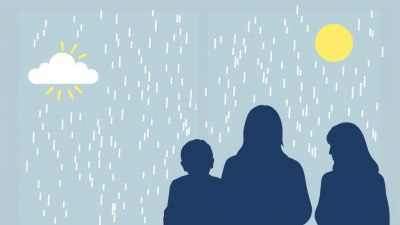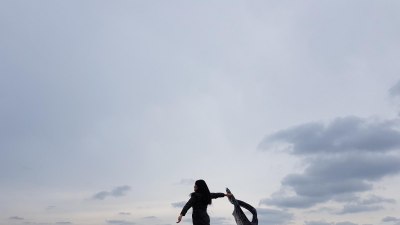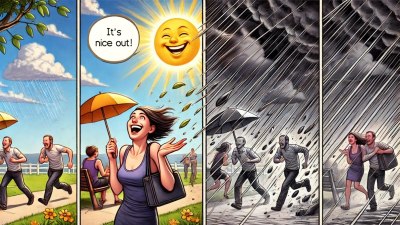Why You Suddenly Want to Change Your Life During a Cold Snap
Explore the surprising psychological and seasonal reasons why cold snaps spark sudden desires for life changes and fresh starts.

Image created with Flux Schnell
Have you ever noticed that when a cold snap hits, you suddenly feel an urge to make significant changes in your life? Whether it's switching careers, adopting a new lifestyle, or picking up fresh habits, the drop in temperature can seem to awaken a restless part of your mind. This phenomenon is more than just coincidence; it intertwines weather, psychology, and human behavior in fascinating ways.
Understanding why cold weather inspires life changes requires examining how environmental factors influence mood and decision-making. Seasonal fluctuations impact our internal rhythms, emotional states, and cognitive processes, priming us for reflection and transformation. This article explores why cold snaps act as catalysts for self-improvement and personal growth.
The Psychological Impact of Cold Weather
Cold temperatures naturally prompt shifts in brain chemistry and hormonal balance. Reduced sunlight in winter affects melatonin and serotonin production, two crucial chemicals governing sleep, mood, and well-being. Serotonin, often called the happiness neurotransmitter, tends to decrease during darker months leading to a dip in mood for many people. This seasonal downturn motivates some to seek change as a way to regain control or improve emotional stability.
Beyond mood, cold weather represents discomfort and challenge. Humans often respond to adverse conditions by re-evaluating their circumstances. The stark reminder of life's fragility and the need for resilience may push individuals toward setting new goals or making bold decisions. This stress can act as a catalyst, prompting people to reconsider their routines, relationships, or career paths to achieve greater satisfaction or security.
Seasonal Affective Disorder and Motivation
Seasonal Affective Disorder (SAD) affects millions worldwide, causing depression during colder months. Paradoxically, for some, this low mood also sparks motivation to transform routines or lifestyle choices to alleviate symptoms. For instance, someone battling winter blues might decide to exercise regularly, change their diet, or pursue therapy. These proactive steps initiated during cold snaps can start a chain reaction of positive life changes.
Moreover, the contrast between the gloominess outside and the desire for warmth creates cognitive dissonance, encouraging people to restore balance by improving their internal environments or external situations. In effect, the cold prompts an inner 'spring cleaning'—the urge to refresh one's life and perspectives.
Symbolism of Winter and New Beginnings
Across cultures, winter is often symbolic of endings but also of potential rebirth. Just as nature appears dormant, humans intuitively recognize these months as a period for introspection and preparation for growth. A cold snap, as a tangible reminder of winter's harshness, can ignite this ancient psychological narrative that change is imminent.
This symbolism motivates individuals to set intentions for the upcoming year or season. Many people take stock of personal achievements or shortcomings during these times, fueling desires to shift direction. The idea that a new phase is approaching encourages commitment to goals that align better with their values and desires.
The Role of Reduced Social Activity
Cold weather often limits social engagements due to discomfort or practical constraints. As a result, people spend more time alone or in quiet settings, facilitating deep reflection. This solitude can uncover dissatisfaction or inspire creativity regarding life's next chapter. Without the usual distractions, individuals confront fundamental questions about purpose and happiness.
The isolation caused by cold snaps may also diminish peer pressure and societal expectations, enabling authentic desires for change to surface. The quiet environment becomes fertile ground for planning and self-discovery, increasing the likelihood of meaningful lifestyle adjustments.
Cold Snaps Triggering Health and Wellness Awareness
During cold weather, physical vulnerability is heightened. Illness risk increases, energy levels can drop, and comfort becomes a priority. These factors lead many to rethink health-related habits. This recalibration often involves decisions to improve diet, exercise, sleep, and stress management.
Recognizing cold snaps as a signal to prioritize wellness is common. The season acts as a natural checkpoint, encouraging preventive care and lifestyle optimization. Consequently, fitness goals, nutritional changes, and mindfulness practices often start during these periods and last well beyond them.
Economic and Practical Influences
Winter and cold snaps also influence economic factors, which can prompt life changes. Higher heating bills, travel constraints, and altered work environments make financial planning and career analysis critical. People may consider remote work options, career shifts, or investments in skill development during these months.
The need to adapt to seasonal challenges can inspire reevaluation of long-term stability and priorities. This practical motivation intertwines with emotional and psychological drivers, creating a multifaceted impulse toward life redesign.
The Science of Circadian Rhythms and Decision Making
Circadian rhythms regulate sleep-wake cycles and influence cognitive function. In colder months with shorter daylight hours, circadian disruption can impact focus, creativity, and mood. Some researchers suggest this altered state increases openness to change and novelty as the brain tries to compensate for environmental stressors.
This neurobiological flexibility can be harnessed during cold snaps, making individuals more receptive to new ideas and more willing to take risks. The biological motivation to 'reset' or 'adapt' helps explain the surge in personal transformations observed during these times.
Historical Perspectives on Seasonal Change and Human Behavior
Historically, human societies adjusted their activities based on seasonal patterns. Agricultural cycles, festivals, and cultural rites all responded to winter conditions. These traditions embedded a collective consciousness associating cold periods with preparation, purification, and renewal.
Modern humans inherit this legacy subconsciously. The instinct to change during cold spells reflects ancient wisdom about timing and personal evolution. Recognizing the historical context adds depth to understanding the cold snap phenomenon as more than just a modern psychological curiosity.
Practical Tips to Channel Cold Snap Energy for Positive Change
If you find yourself motivated to change during a cold snap, harnessing this energy effectively is key. Set realistic goals by breaking down large ambitions into manageable steps. Establish routines that accommodate seasonal constraints while promoting well-being. Prioritize self-care to maintain energy and avoid burnout.
Social support remains important, even if social interactions feel limited. Join online communities or schedule small, safe meetups to share progress and gain encouragement. Use the quieter time to develop skills, reflect on values, and build habits that endure beyond the cold season.
Finally, embrace the symbolism of winter by viewing challenges as temporary and a necessary phase of transformation. This mindset fosters resilience and patience, helping sustain motivation throughout the journey.
Examples of Life Changes Sparked by Cold Snaps
Numerous anecdotal reports illustrate the connection between cold weather and life transitions. Some people decide to move to new cities or countries seeking warmer climates or fresh starts. Others take up new professions, enroll in educational programs, or embark on fitness journeys.
Creative endeavors often flourish during cold seasons as well, with writers, artists, and musicians channeling introspective moods into projects that reframe their identities. These changes, though sparked by external conditions, originate deeply within individuals’ desires for growth and fulfillment.
The Role of Technology and Modern Lifestyle Factors
With modern heating, lighting, and entertainment, the direct impact of cold weather seems diluted. Yet paradoxically, technology also increases awareness of seasonal changes through weather forecasts, social media, and health apps, amplifying psychological effects.
Digital tools can support or hinder change efforts sparked by cold snaps. When used wisely, they provide motivation, education, and community. Misused, they contribute to isolation or distraction. Balancing technology use during these times is essential to translating cold snap inspiration into lasting transformation.
Future Research Directions
While many theories explain why cold snaps inspire life changes, further research can deepen understanding. Studies could explore the interplay between environmental triggers and personality traits, identifying who is most likely to respond with transformation.
Neuroscientific investigations might reveal how seasonal brain chemistry directly influences decision-making and motivation. Sociological research can examine cultural differences in cold weather responses, enriching global perspectives on human adaptability.
Personal Reflection and Action Steps
When you notice a sudden urge to change during a cold snap, take time to reflect honestly. Assess which desires align with your authentic self and which may be transient reactions to discomfort. Journaling, meditation, or discussing with trusted friends can clarify intentions.
Action follows awareness. Take thoughtful steps rather than impulsive leaps. Use the season’s energy as a spark but build change incrementally to ensure sustainability. Remember the cycle of seasons promises renewal and growth if nurtured consistently.
In sum, cold snaps trigger a complex blend of psychological, biological, cultural, and practical factors that inspire many to seek meaningful life changes. Understanding and utilizing these influences can transform chilly, challenging times into powerful opportunities for personal evolution.











